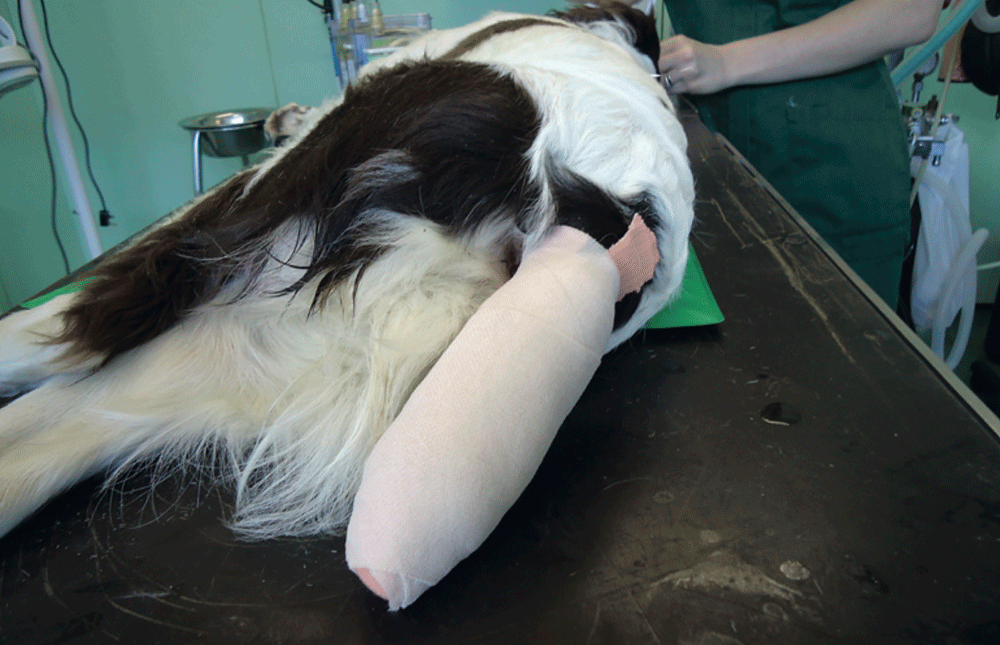Why the law on docking tails needs to change
Born in Scotland, springer spaniel Storm moved to England with an undocked tail. Vet Neil McIntosh describes how working in cover proved costly and why the law needs to change

English springer spaniel Sgurr na Ba Glaise (or Peak of the Grey Cow, if you prefer) is named after a part of the rugged Rois-Bheinn range of mountains that looks out over the Small Isles of Canna, Rum, Eigg and Muck on the west coast of Scotland. Called Storm for short, his problem is his tail.
The early days
Storm comes from a small kennel on the Isle of Skye, where the dogs are rigorously health tested. This reputation for good health ensures that, once weaned, the puppies travel far and wide to their new homes.
One of Storm’s siblings is trained to hunt wild boar in Germany, another works under a goshawk in Holland, while two brothers are with Medic Alert Dogs; Sye is employed on a research project for the early detection of prostate cancer; Rye is a hypo-alert dog, living with a family one member of which has severe diabetes.
Storm was sold to a private house in Wiltshire and his owner, David, is a keen shot and amateur dog trainer. And this is where his problem began.
 The legislation
The legislation
Tail docking was banned in England on 6 April 2007 and in Wales on 28 March 2007, although an exemption was made for some working dogs. This allowed the legal docking, by a veterinary surgeon, of puppies less than five days old of HPR breeds, spaniels and terriers if evidence was provided that they were likely to be worked in connection with law enforcement, the activities of Her Majesty’s Armed Forces, emergency rescue, lawful pest control or the lawful shooting of animals.
Owners of puppies are required to make a signed statement regarding the breed of the dam, the date of birth of the puppies and that they are intended for working.
The vet involved must see this statement, the dam herself and additional evidence that the pups are genuinely intended for working, such as a shotgun certificate or a letter from a gamekeeper or land occupier stating that the breeder is known to them.
The Docking of Working Dogs’ Tails (England) Regulations 2007 also require that docked puppies are micro-chipped (although not necessarily when they are actually docked) and that the vet supplies a certificate to that effect.
The problem
Unfortunately, in Scotland there is no such exemption. The Animal Health and Welfare (Scotland) Act 2006 banned the docking of tails from 30 April 2007. The penalty for illegal docking is a fine of up to £5,000 and/or six months in jail. It is also an offence to transport puppies out of Scotland solely for the purpose of tail docking. Breeder Enid Lake decided against transporting Storm’s mother, Jodie (Druimmuir Dancing Queen), hundreds of miles down south to have her offspring, so accepted the situation and remained at home.
Storm grew quickly and his training proceeded well. Before long, he was retrieving in open grassland with occasional forays into heavy cover. All went well until, one day, he encountered brambles and the tip of his tail started to bleed. By April that year a bleeding tail was a regular occurrence.
 After two hunts at the Hampshire Gundog Society Working Test on 4 July and the BASC Training Day on 8 July at Smokey Bottom, his tail was a bloody mess, and this pattern continued week after week. Antibiotics and creams did nothing to reduce the discomfort, while bandages caused the wounds to fester further. Pretty soon, Storm could not concentrate on his work and frequently stopped, mid retrieve, to lick at his wounds.
After two hunts at the Hampshire Gundog Society Working Test on 4 July and the BASC Training Day on 8 July at Smokey Bottom, his tail was a bloody mess, and this pattern continued week after week. Antibiotics and creams did nothing to reduce the discomfort, while bandages caused the wounds to fester further. Pretty soon, Storm could not concentrate on his work and frequently stopped, mid retrieve, to lick at his wounds.
The solution
On 9 August he was admitted to a local veterinary surgery. Under anaesthetic, his tail was clipped to expose the black, dying tip. This was scrubbed clean and an incision was made through the skin, exposing the bone. The ligaments, tendons and nerves were incised and the blood vessels carefully ligated. A scalpel was forced between two vertebrae, severing the attachment of the lower part. The raw end was sutured and painkillers and antibiotics prescribed.
Unfortunately, Storm contracted an infection and the procedure had to be repeated, with yet more of his tail needing to be removed. This time, it was bandaged well and healed nicely. However, the cost to Storm’s owner was nearly £800 – when it could have been done cheaply and painlessly when he was just a few days old.
So what can you do?
If you have had a bad experience with an undocked dog or wouldn’t buy an undocked dog from Scotland, please tell the Scottish Gamekeepers Association at info@scottishgamekeepers.co.uk, write to your MSP (if you have one) or complain to the Scottish government.








